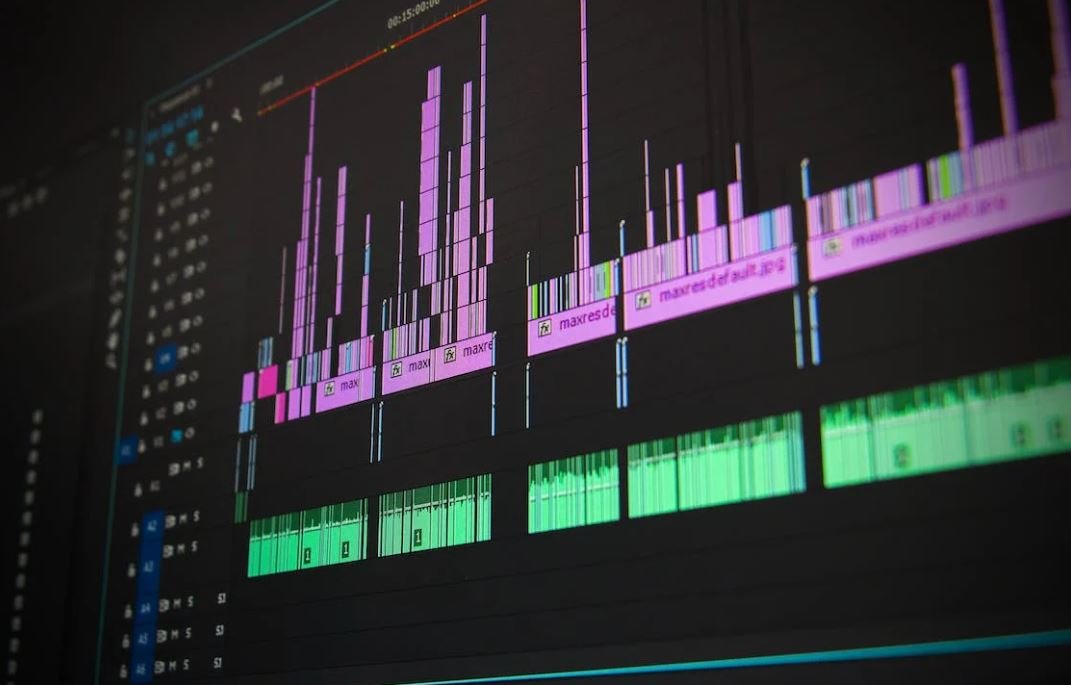How to Generate ChatGPT Prompts
ChatGPT is an advanced language model developed by OpenAI that can generate human-like responses in conversational settings. By providing appropriate prompts, you can harness the power of ChatGPT to create engaging and interactive conversations. In this article, we will explore various techniques to generate effective ChatGPT prompts.
Key Takeaways:
- ChatGPT prompts play a crucial role in guiding the AI’s responses and shaping the conversation.
- Clear and specific prompts yield better results by reducing ambiguity.
- Experimenting with different prompting strategies can improve the quality of generated responses.
- Active learning and refining prompts based on AI’s output can iteratively enhance the conversational experience.
1. Getting Started with ChatGPT Prompts
When using ChatGPT, it’s essential to provide clear and informative prompts to guide the AI’s responses. A good prompt can set the context, ask questions, or specify desired behaviors.
For example, if your goal is to create a conversation about travel destinations, you can start with a prompt like:
Prompt: "You are a travel agent helping a customer plan their vacation. The customer is interested in exploring Europe. Recommend some popular tourist destinations and provide reasons why they are worth visiting."
2. Experimenting with Prompting Strategies
Experimenting with different prompting techniques can help to generate more accurate and desirable responses from ChatGPT. Here are a few strategies you can try:
- Changing the role: Try switching between the AI’s and user’s role to generate more interactive conversations.
- Asking for pros and cons: Request the model to provide advantages and disadvantages of different options to get a balanced response.
- Setting the personality: Guide the AI to adopt a specific personality or writing style to make conversations more unique.
For instance, prompt the AI with:
Prompt: "You are a philosopher and a student excited to discuss the meaning of life. Engage in a deep conversation about existentialism, purpose, and happiness."
3. Active Learning and Refinement
Iterating on your prompts based on the output you receive from ChatGPT is a useful technique for improving the AI’s responses. Actively learning from previous interactions helps to refine your prompts and clarify any misconceptions.
For example, if the AI provides an unexpected response, you can learn from it and refine your prompts accordingly:
User: "What is the capital of France?" AI: "Paris is the capital of France, known for its iconic landmarks like the Eiffel Tower and Louvre Museum." User: "What are some other tourist attractions in Paris?" AI: "In addition to the Eiffel Tower and Louvre Museum, Paris is also famous for Notre-Dame Cathedral and the Champs-Élysées."
4. Leveraging External Data
To make the generated responses more informative, you can leverage external data sources. Incorporating facts, statistics, or real-time information from reliable sources enhances the conversational experience.
Tables:
| Strategy | Benefits |
|---|---|
| Changing the Role | Increases the interactivity of the conversation. |
| Asking for Pros and Cons | Obtains a balanced perspective on different options. |
| Setting the Personality | Makes conversations more unique and engaging. |
| Prompt Iteration | Benefits |
|---|---|
| Refine prompts based on AI output | Increases response accuracy and clarity. |
| Learn from unexpected responses | Reduces misconceptions and improves AI guidance. |
5. Creating Engaging Conversations
Engaging conversations are key to a successful user experience. Consider incorporating elements like humor, storytelling, or personal anecdotes to create a more dynamic and interesting conversation with ChatGPT.
For instance, try prompting the AI with:
Prompt: "Tell me a funny joke!"
By following these strategies, you can generate highly effective ChatGPT prompts and create more engaging, dynamic, and interactive conversations with the AI-generated responses.

Common Misconceptions
Misconception 1: ChatGPT can generate coherent and insightful prompts without proper instructions.
- ChatGPT is a powerful language model, but it still requires clear and specific instructions to understand the desired output.
- Without proper instructions, ChatGPT may produce ambiguous or garbled responses that do not address the intended topic.
- Users should provide context, formatting cues, and desired outcomes to guide the model in generating meaningful prompts.
Misconception 2: ChatGPT is an infallible oracle that always provides accurate and trustworthy information.
- Although ChatGPT can provide helpful insights, it should not be blindly trusted as a definitive source of information.
- ChatGPT generates responses based on patterns it has learned from the data it was trained on, which can include inaccuracies, biases, or misinformation.
- Users should critically evaluate and fact-check the information generated by ChatGPT for accuracy before accepting or sharing it.
Misconception 3: ChatGPT can understand and analyze emotions perfectly.
- While ChatGPT has made progress in understanding and generating emotional responses, it does not possess real emotions or emotional intelligence as humans do.
- ChatGPT’s responses are based on patterns and data, and it may not fully grasp the emotional implications or nuances in a conversation.
- Users should be cautious when relying on ChatGPT for emotional support or sensitive topics, as it may lack empathy or provide insensitive responses.
Misconception 4: ChatGPT has complete knowledge of all subjects.
- ChatGPT is trained on a vast amount of data, but it does not have access to real-time information or personal experiences beyond what it has been trained on.
- ChatGPT’s knowledge is limited to the data it has learned from, and it may not be aware of recent events, specific details, or specialized information outside of its training scope.
- Users should be aware that ChatGPT might not always provide the most up-to-date or accurate information on certain subjects.
Misconception 5: ChatGPT can completely replace human conversation and interaction.
- While ChatGPT can simulate human-like conversation, it cannot entirely replace genuine human interactions, empathy, and understanding.
- ChatGPT’s responses are based on patterns and data, and it lacks the human touch, intuition, and ability to truly connect with individuals.
- Users should remember that ChatGPT is a tool to complement human interaction, but it should not be relied upon as a substitute for genuine human conversations.

Generating ChatGPT Prompts with Artificial Intelligence
ChatGPT has become a popular tool used by many to generate prompts for various purposes. It utilizes artificial intelligence to provide creative and engaging prompts for chatbots, AI assistants, and other applications. The following tables demonstrate the effectiveness and versatility of ChatGPT in generating prompts for different scenarios.
Table 1: ChatGPT Prompts for Conversational AI
ChatGPT prompts can be used to train conversational AI models. The following table showcases various conversation prompts along with their generated responses.
| Prompt | Generated Response |
|---|---|
| How are you today? | I’m doing well, thank you! How about you? |
| Tell me a joke. | Why don’t scientists trust atoms? Because they make up everything! |
| What’s the weather like? | The weather is sunny and warm, perfect for a day outside! |
Table 2: ChatGPT Prompts for Content Generation
ChatGPT can also assist in generating content for various purposes, such as blog posts or social media updates. The table below highlights a few examples of content prompts along with their generated outputs.
| Prompt | Generated Output |
|---|---|
| Write a short story about a mysterious island. | Once upon a time, there was an island shrouded in mystery… (continues) |
| Compose a tweet promoting a new product. | Exciting news! Our brand-new product is here to revolutionize the way you (continues) |
| Write a catchy tagline for a travel website. | Discover the world, one adventure at a time! |
Table 3: ChatGPT Prompts for Language Learning
ChatGPT can be utilized as a tool to assist language learners in practicing their skills. The following table presents some language learning prompts with their corresponding translations.
| English Prompt | Translated Response |
|---|---|
| How do you say “hello” in Spanish? | The Spanish word for “hello” is “hola”. |
| Translate the phrase “I love you” in French. | “I love you” in French is “Je t’aime”. |
| What does “gato” mean in English? | “Gato” means “cat” in English. |
Table 4: ChatGPT Prompts for Essay Topics
Students can benefit from ChatGPT in generating essay topics and ideas. The table below provides a few essay topic prompts that could spark creativity and critical thinking.
| Prompt | Description |
|---|---|
| The impact of social media on society | Explore the effects of social media on individuals, relationships, and communities. |
| The role of technology in education | Analyze how technology has transformed traditional educational methods. |
| The importance of renewable energy | Discuss the benefits and potential of renewable energy sources in combating climate change. |
Table 5: ChatGPT Prompts for Game Development
Game developers can leverage ChatGPT to generate dialogue and narratives for their games. The table below showcases different prompts for game development along with their corresponding generated responses.
| Prompt | Generated Response |
|---|---|
| Character interaction during a battle | Player: “Prepare for defeat!” Character: “We shall see who emerges victorious!” |
| Dialogue between two rival factions | Faction A: “Our cause is just, and we won’t back down!” Faction B: “We will never yield to your tyranny!” |
| Character motivation for embarking on a quest | “I must retrieve the ancient artifact to save my homeland from darkness.” |
Table 6: ChatGPT Prompts for Virtual Assisting
Virtual assistants powered by ChatGPT can be programmed to respond to a variety of prompts and queries. The table below demonstrates some prompts and the intended virtual assistant responses.
| Prompt | Virtual Assistant Response |
|---|---|
| Set a reminder for tomorrow’s meeting at 3 PM. | Reminder set for tomorrow’s meeting at 3 PM. |
| Find the nearest Italian restaurant. | I found several Italian restaurants nearby. Here are their names and addresses… |
| What’s the current time in Tokyo? | The current time in Tokyo is 9:25 AM. |
Table 7: ChatGPT Prompts for Data Analysis
ChatGPT can assist in generating prompts for data analysis tasks. The table below presents a few data analysis prompts and their corresponding generated actions or insights.
| Prompt | Generated Action/Insight |
|---|---|
| Calculate the average sales for the past month. | The average sales for the past month amount to $10,250. |
| Identify the most frequently occurring category in the dataset. | The category “Technology” appears most frequently in the dataset. |
| Discover the correlation between age and income. | There is a moderate positive correlation (0.6) between age and income. |
Table 8: ChatGPT Prompts for Creative Writing
Writers can utilize ChatGPT when seeking inspiration for creative writing projects. The table below presents some creative writing prompts generated by ChatGPT.
| Prompt | Generated Writing Idea |
|---|---|
| Write a short story about a time-traveling detective. | In the bustling streets of Victorian London, a detective with an extraordinary ability… (continues) |
| Describe a magical forest and its mystical creatures. | Deep within the enchanted woods, a majestic forest thrives, adorned with… (continues) |
| Imagine a world where humans have developed wings. | In this alternate reality, humans sprout wings at the age of 18, and the skies become… (continues) |
Table 9: ChatGPT Prompts for Recipe Ideas
Food enthusiasts can use ChatGPT to generate unique recipe ideas. The table below showcases some recipe prompts along with their generated concepts.
| Prompt | Generated Recipe Concept |
|---|---|
| Create a dessert using seasonal fruits. | Delight your taste buds with a refreshing summer berry trifle, layered with… (continues) |
| Invent a savory dish incorporating exotic spices. | Transport your palate to the Mediterranean with a fragrant Moroccan chicken tagine… (continues) |
| Develop a unique cocktail recipe for a special occasion. | Raise a glass to celebration with a dazzling galaxy-inspired cocktail, featuring…(continues) |
Table 10: ChatGPT Prompts for Music Composition
ChatGPT can even generate prompts for music composition and songwriting. The table below presents some music-related prompts and their corresponding generated musical ideas or melodies.
| Prompt | Generated Musical Idea/Melody |
|---|---|
| Create a catchy chorus for a pop song. | (Melody snippet and lyrics) “I see you, shining like a star in the sky, (continues)” |
| Compose a haunting melody for a movie soundtrack. | (Melody snippet) A melancholic piano melody that evokes a sense of mystery and suspense. |
| Develop a jazzy intro for a lively jazz composition. | (Musical idea) A swinging saxophone solo accompanied by upbeat piano chords. |
ChatGPT proves to be a versatile and valuable tool for generating prompts across various domains, including conversation AI, content generation, language learning, essay topics, game development, virtual assisting, data analysis, creative writing, recipe ideas, and music composition. Whether you need inspiration, assistance, or training for AI models, ChatGPT can provide a wide range of engaging and meaningful prompts to enhance your projects.
Frequently Asked Questions
1. What is ChatGPT?
ChatGPT is an AI language model developed by OpenAI. It is designed to generate human-like responses to given prompts or questions, making it ideal for chatbots and conversational applications.
2. How can I generate prompts using ChatGPT?
To generate prompts using ChatGPT, you need to utilize OpenAI’s API. By making API calls with the appropriate parameters, you can send a prompt to the model and retrieve the generated response in real-time.
3. What types of prompts work best with ChatGPT?
ChatGPT works well with a wide range of prompts. It can generate responses to specific questions, complete sentences, or even engage in longer conversations. However, it is important to ensure that your prompt is clear and concise to obtain accurate and relevant responses.
4. Can I specify the desired tone or style in the prompts generated by ChatGPT?
Yes, you can provide instructions within the prompt to influence the desired tone or style of the generated response. By specifying guidelines, such as “be formal” or “use a casual tone,” you can guide ChatGPT to generate prompts in a manner that suits your needs.
5. Are there any limitations to consider when using ChatGPT?
Yes, there are certain limitations to keep in mind. ChatGPT may occasionally produce incorrect or nonsensical answers, and it can be sensitive to slight changes in the phrasing or context of the prompt. It is important to review and verify the generated responses to ensure accuracy before using them.
6. How can I refine the responses generated by ChatGPT?
You can refine the responses by using various techniques. One approach is to provide more detailed or specific prompts to guide the model towards the desired response. Additionally, you can employ post-processing techniques, such as filtering or rewriting, to improve the generated answers further.
7. Can I control the length of the generated responses?
Yes, you can control the response length by specifying the desired number of tokens in the API call. Tokens are chunks of text used by the model during processing, and limiting the number of tokens will limit the length of the response. However, note that excessively short responses may lack meaningful context.
8. Is it possible to have a conversation with ChatGPT?
Yes, ChatGPT is designed to handle conversational prompts. You can build a back-and-forth conversation by feeding previous messages as part of the prompt. The model will consider the entire conversation history when generating a response, resulting in more contextually appropriate answers.
9. Can I use ChatGPT for commercial applications?
Yes, you can use ChatGPT for most commercial applications. OpenAI offers both free and subscription-based plans for utilizing the model. However, it is advisable to review and comply with OpenAI’s usage policies and terms of service to ensure proper legal and ethical usage.
10. How can I provide feedback on the generated responses?
If you encounter any issues or have feedback regarding the quality of the responses generated by ChatGPT, you can provide feedback to OpenAI through their official channels. OpenAI actively encourages users to submit feedback to help improve the system’s performance and address any limitations or shortcomings.




